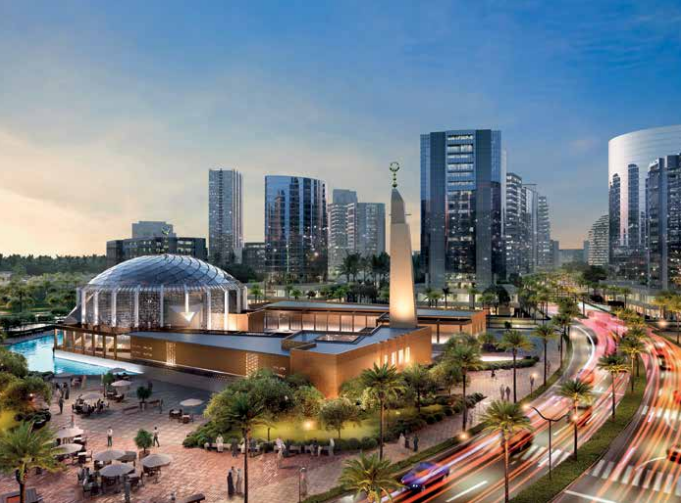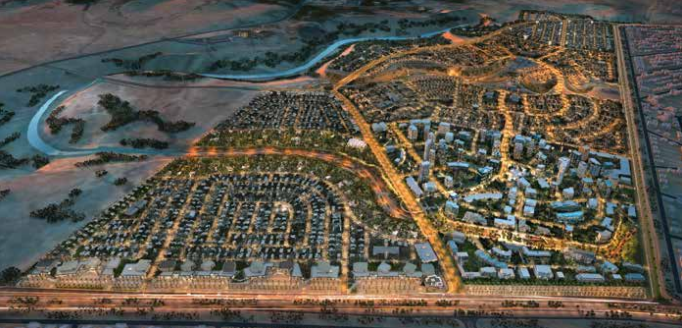DUBAI: More than 230,000 people in countries neighboring Palestine and Israel could be pushed into poverty as the effects of the war ripples across the region, according to a UN-led assessment.
Countries in the Arab region, particularly those that form the “ring of fire” around Israel and Palestine, face a grave economic downturn thanks to the ongoing war in Gaza, according to a study carried out by the UN’s Development Program and Economic and Social Commission for Western Asia.
The report, titled “Expected socio-economic impacts of the Gaza Crisis on neighboring countries in the Arab states region,” states how Egypt, Jordan and Lebanon could see their economies regress by at least two to three years due to the ramifications of the war.
The analysis examines several possible regional spillover effects, based on lessons learned from previous conflicts in the region, including the 2003 invasion of Iraq, the 2008-2009 war in Gaza and the crisis in Syria that has been ongoing since 2011.
All these conflicts have contributed to changes in oil prices, pressures on public debt, influxes of refugees and effects on tourism and trade, among others.
These spillover effects may not have fully played out at present and there remain various risk factors to be monitored, states the UNDP report.
“The impact of the Israel-Hamas war will depend on the length and depth of the conflict as well as if it spills over into the wider region, thus drawing in other parties, resulting in international ramifications that would then have an effect on global supply chains,” Nasser Saidi, former Lebanese economy and trade minister and founder of economic and business advisory consultancy Nasser Saidi & Associates, told Arab News at the end of November.
According to the World Bank, the war has left Gaza’s economy almost at a standstill, and approximately 85 percent of workers are without jobs, says the organization.
In a recent analysis of the economic impact of the conflict, the Washington-based development organization said the Palestinian territory was operating at only 16 percent of its productive capacity and was experiencing a “deep recession.”
The economic cost of the Israel-Hamas war in Gaza on the neighboring countries of Egypt, Jordan and Lebanon in terms of loss of gross domestic product could rise to at least $10.3 billion this year and push more than 230,000 people into poverty, according to the study.
This amount could double if the conflict lasts for another six months, the UNDP report says.
“The crisis was a bomb in an already fragile regional situation ... It soured sentiment with fear of what could happen and where things are going,” Abdallah Al-Dardari, UN assistant secretary-general and UNDP’s director of the Regional Bureau for Arab States who led the study, told Reuters.
Al-Dardari, a former minister for economic affairs in the Syrian government, noted that the scale of destruction in Gaza within such a short time was unprecedented since World War II.
“To lose 45-50 percent of all housing in one month of fighting ... We have never seen anything like this ... the relationship between destruction level and time, it’s unique,” he told Reuters.
According to another UN analysis released in early November, the West Bank and Gaza’s GDP shrank 4 percent in the war’s first month, sending more than 400,000 people into poverty — an economic impact unseen in the conflicts in Syria and Ukraine or any previous war between Israel and Hamas.
Al-Dardari told a news conference launching the November report that a loss of 12 percent of GDP for Palestinians by the end of the year would be “massive and unprecedented.”
By comparison, said Al-Dardari, the Syrian economy lost 1 percent of its GDP per month at the height of its conflict, and it took Ukraine a year and a half of fighting to lose 30 percent of its GDP — an average of about 1.6 per month.
The war arrived just as Egypt, Lebanon and Jordan were already facing severe and mounting struggles from high unemployment, fiscal pressures, impacted investment flows and slow growth.
These countries were in the throes of recovering from the coronavirus pandemic, and Lebanon in particular remains in a dire state thanks to one of its worst economic crises and the aftermath of the Aug. 4 2020 Beirut explosion.
In an interview with Arab News earlier this month, the chairman of business giant Al-Habtoor Group admitted he is prepared to pull out of Lebanon entirely, such is the concern over the country’s economic future.
Khalaf Al-Habtoor said the value of his group’s $1.5 billion direct and indirect investments in Lebanon is now close to zero thanks to the downturn.
The country is already mired in an ongoing financial crisis and deep political instability, and the conflict at its border is threatening to further destabilize the economy.
Across Jordan and Egypt, one area already experiencing ramifications because of the war is the tourism sector, which is now seeing a downturn reminiscent of the COVID-19-era.
In Jordan, tourism accounts for 10 percent of GDP, but since the war began, hotels and cultural tours have witnessed numerous cancellations, almost overnight.
In Egypt, the travel industry is still behind pre-pandemic figures when it comes to GDP contribution, posting 7.7 percent in 2022 compared to 8.5 percent in 2019.
The war has seen the sector take another hit, with numerous tourism bookings to popular destinations in the Sinai Peninsula, which borders Gaza, such as Taba, Nuweibeh, Dahab and Sharm El-Sheikh, canceled.
The future remains dire for the entire region, a Lebanese Beirut-based businessman told Arab News on the condition of anonymity.
“We have been at breaking point for so long,” he said, adding: “The current war, or an expanded war in the country, only exacerbates our situation. We have been living in a state of collapse for the past four years. We have gotten used to it. There is no financial sector, no government and no hope for young startups.”
The businessman added: “If Israel engages in a greater war with Hezbollah, the economic costs are worse for Israel.
“We have already been living in economic and social despair.”





























